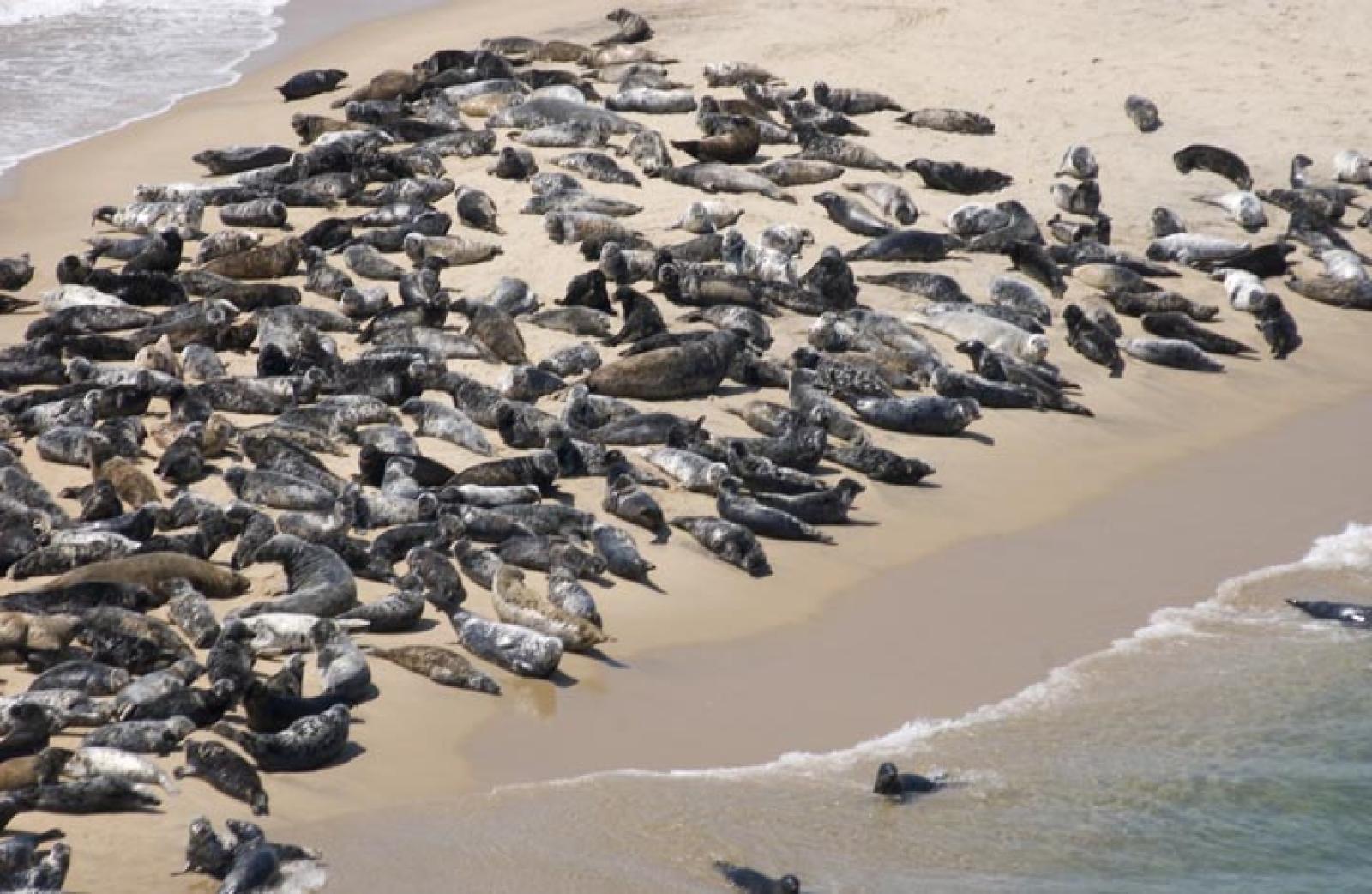It’s been 35 years since the movie Jaws forever linked great white shark attacks and Martha’s Vineyard in the popular imagination of the world, yet in all that time no one has ever been attacked.
Then, long after all thought it was safe to go back in the water, along came the U.S. Coast Guard with last week’s holiday boating advice, headed “Shark Advisory” and warning swimmers, kayakers and small boaters of the danger of great white sharks.
“Over the past few years, sharks sighted off the coast of New England have ranged from six to 15 feet in length and could easily capsize a small boat or kayak, the Coast Guard statement warned.
It went on to quote Al Johnson, the first Coast Guard district’s recreational boating specialist, saying he had “no doubt that a great white shark that swims into your comfort zone would surely find a splashing paddle or dangling hand inviting. I also expect that same passing shark would spend little time differentiating between boater, paddler and prey.”
The advisory also noted that “predation is not generally a concern for boaters and paddlers in Northeast waters,” and that shark attacks were rare in this part of the country, and there had as yet been no sightings along coastal beaches this season.
So why would the Coast Guard offer such an unprecedented warning? The answer was contained in the fifth paragraph of the release.
The answer was seals.
The Coast Guard spoke of a growing seal population. Augustus Ben David 2nd, owner of the World of Reptiles and Birds Park, former director of Mass Audubon’s Felix Neck Wildlife Sanctuary and perhaps the Island’s best-known naturalist, preferred the word “exploding.”
Ironically, back when Jaws was made in 1975, there were not a lot of seals in the waters around the Vineyard. For several hundred years they had been hunted, to the point where, 50 years ago, there were no breeding populations in Massachusetts.
Now, gray and harbor seals are back in the thousands, and with them come a major predator, great white sharks.
What the Coast Guard was warning of is in fact a remarkable conservation story.
“The seal population of the Eastern seaboard, especially the northwestern Atlantic, has just exploded,” said Mr. Ben David. “The harbor seal is a major part of the population, although occasionally we get harp seals and hooded seals. And they are a prey item of the great white. That explains why the great white population is increasing. We’ve had great whites in our waters before, but not in these numbers. They had five in view at one time last summer, right off Chatham,” he said.
That said, Mr. Ben David said warnings about the danger of attack were “overdoing it.”
“The last great white attack was back in the 1930s or 40s, I believe,” he said. “That’s not to say it’s not something to be cognizant of. If there are sharks close to the shore, it’s just common sense not to go in the water, just as it’s common sense not to go swimming at night.”
Bob Prescott, the director of the Mass Audubon sanctuary at Wellfleet, saw his first gray seal on a shoal between the Vineyard and Nantucket back in the 1970s, when they were still a rarity.
“Basically harbor and gray seals were eliminated from Massachusetts as breeding animals,” he said, adding: “They used [until 1962] to pay a bounty killing of seals, which were perceived as a threat to fishing. Every time someone turned in a seal nose, got paid for it.”
But seals were not the problem with fishing stocks, poor fisheries management was.
“In the 1980s, when the striped bass population was at its low ebb, the gray seals started coming back, and now both stocks have recovered in tandem, one from the bounty [seals] and the other from overfishing [striped bass],” Mr. Prescott said.
Mr. Prescott noted that in 1980 the number of striped bass was believed to be about five million; now it’s about 26 million.
“Seals have had virtually no impact on the stripers’ return,” he said.
But they have had a big impact on the return of great whites.
Gerg Skomal, a shark specialist with the Division of Martine Fisheries, believes that when seal numbers were low, the sharks preyed heavily on whales — calves, sick or injured individuals — but now were making a “dietary shift” back to seals.
He advances evidence which is mostly circumstantial at this stage.
“The great white is a very elusive, very unpredictable animal in this part of the world. In the Altantic there are no places where you tend to find them in high concentrations,” Mr. Skomal said.
But in other parts of the world, like off South Africa or the southern coast of Australia, you can predictably find them.
“One thing all the hot spots feature is large seal or sea lion populations,” Mr. Skomal said.
And now there are large seal populations here. Indeed, the largest is on Muskeget island, between the Vineyard and Nantucket. It produces something like 2,000 pups each year.
It may be that a natural balance, upset for several hundreds of years, is re-establishing itself.
“I think the sharks tended to be scavengers of dead whales because their preferred food source, seals, was not so abundant. And so I think we now have the right spatial and temporal conditions now exist for a shift back to gray seals as their major food source,” Mr. Skomal said. “That is just conjecture at this point, however,” he said.
Nonethless, it would be prudent to heed the Coast Guard warning that boaters, paddlers, and of course swimmers should “avoid passing pods or springs of seals and avoid seal colonies and other areas where pinnipeds bask.”






Comments (2)
Comments
Comment policy »